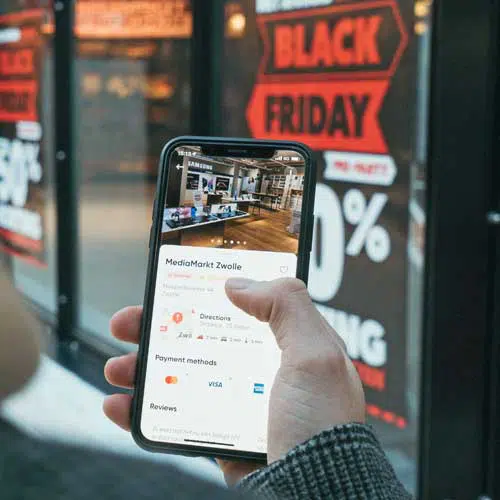When it comes to shopping, it’s becoming a mobile world. A report released on Thursday by omnichannel-platform provider NewStore Inc. reveals that 88% of consumers surveyed have at least one shopping app on their phone, 50% of respondents have more than four shopping apps, and 9% have more than 10. Given the proliferation of mobile-shopping apps, consumers in the United States spent nearly 3 billion hours using them in 2021, according to the report.
Boston-based NewStore, which surveyed 610 consumers in the U.S. this year, defines mobile-shopping apps as brand and retailer-specific apps such as Nike and Swedish clothier H&M, and not marketplace apps such as Amazon, Target, or Walmart.
From a demographic standpoint, consumers under age 44 are the biggest users of mobile-shopping apps, with 96% of 18-44 year olds having at least one mobile-shopping app and 61% of that age group having more than four. By comparison, 75% of consumers age 45 and up have at least one mobile-shopping app and 39% of consumers age 45 and older have more than four of the apps.

A key driver of why younger consumers are embracing mobile shopping so readily is that they have grown up with smart phones. “This means they will seek out the best experiences possible on mobile— especially when it comes to shopping—and apps are the best vehicle for meeting their expectations,” a NewStore spokesperson says by email.
Not surprisingly, consumers with mobile-shopping apps use them with great frequency. Among all respondents, 15% use them daily, 37% use them a few times a week, and 26% use them a few times a month. Consumers 30 to 44 years old are the most frequent daily users (about 22%), as well as on a weekly basis (40%). Consumers with more than four mobile shopping apps are also heavy users, with about 21% using them daily and about 43% using them a few times a week.
Heavy users of the apps are also more likely to purchase using the app as opposed to just browsing. Among consumers 18-44 years old, 96% say they would be likely to purchase when using a mobile-shopping app, compared to 85% of consumers age 45 and older. Consumers with more than four apps are also more likely to purchase when using their app (99%).
Consumers feel they get a better shopping experience than they would on a mobile Web site, according to the research. Among respondents, 60% cited a better user experience as the reason for using mobile shopping apps. Among consumers with more than four apps, the figure jumps to 70%.
“Mobile-shopping apps are a far better option than the mobile Web because they can offer consumers more seamless and personalized experiences,” says the NewStore spokesperson. “When done right, mobile-shopping apps slot into the customer journey, putting a retailer’s brand in the hands of shoppers, whether they’re at home or on the go. More specifically, [the] apps offer faster load times, a better navigation UX, enhanced product views, and more interactive features. Mobile Web sites simply can’t deliver these experiences.”
Other reasons consumers prefer these apps include better promotions/discounts (51%), access to exclusive products (30%), better loyalty programs (30%), and better customer service (23%).
There are, however, key features that consumers expect from mobile-shopping apps. These include detailed product information, such as colors and sizes; coupon and discount code management; loyalty or rewards profile management; a store locator with hours, location, and services; and detailed, real-time inventory information for products at every location.
“The results of this survey demonstrate that brands need to have a mobile app, as [this is] the preferred shopping method for many of their key customer segments,” the report says. “It’s also clear that a subpar app won’t cut it. Consumers want a feature-rich app that supports every step of their buying journey.”





